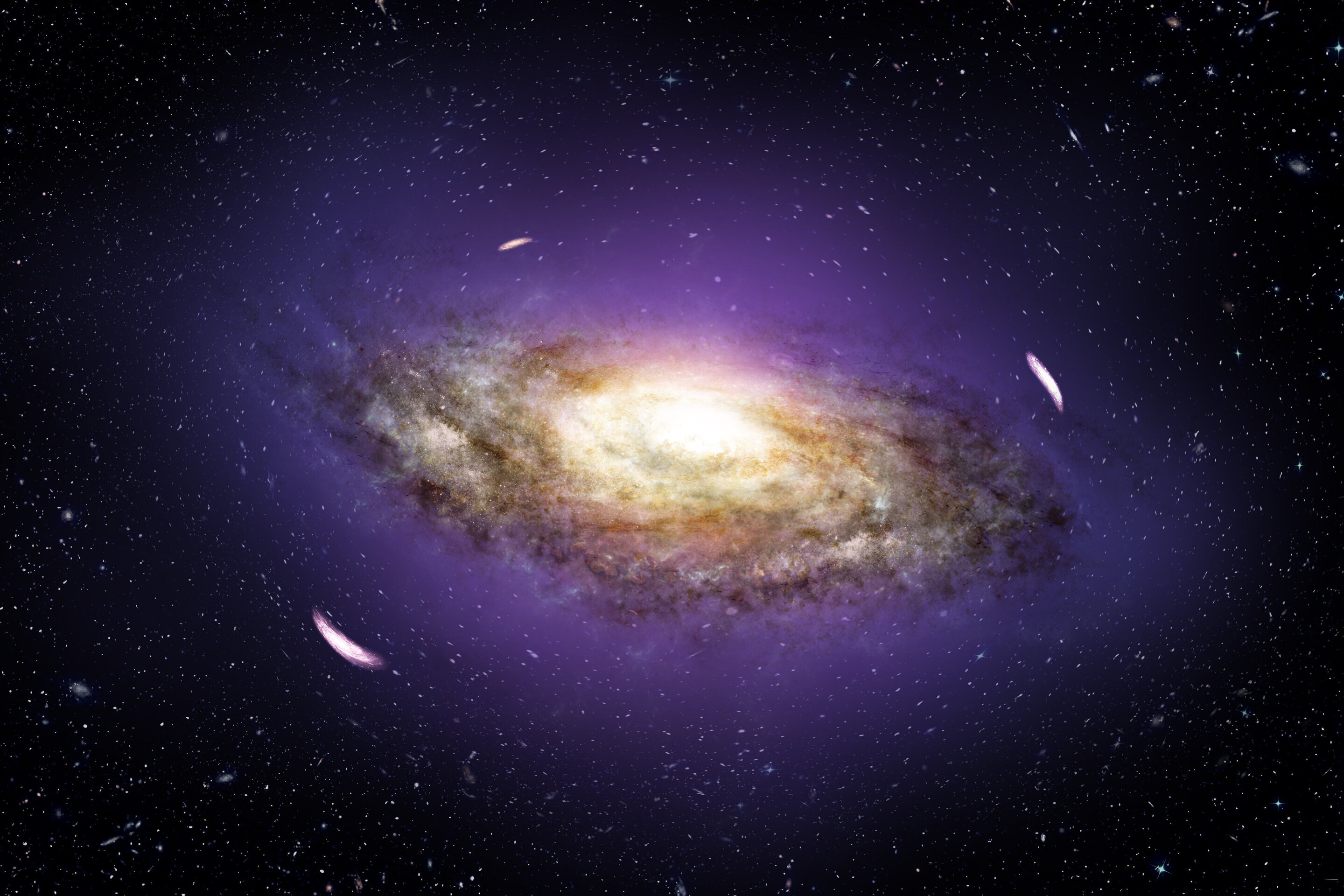Seeing dark matter in a new light
NOVEMBER 6, 2020
by Morgan Hollis, Royal Astronomical Society

Artist's impression of a galaxy surrounded by gravitational distortions due to dark matter. Galaxies live inside larger concentrations of invisible dark matter (coloured purple in this image), however the dark matter's effects can be seen by looking at the deformations of background galaxies. Credit: Swinburne Astronomy Productions - James Josephides
A small team of astronomers have found a new way to 'see' the elusive dark matter haloes that surround galaxies, with a new technique 10 times more precise than the previous-best method. The work is published in Monthly Notices of the Royal Astronomical Society.
Scientists currently estimate that up to 85% of the mass in the universe is effectively invisible. This "dark matter" cannot be observed directly, because it does not interact with light in the same way as the ordinary matter that makes up stars, planets, and life on Earth.
So how do we measure what cannot be seen? The key is to measure the effect of gravity that the dark matter produces.
Pol Gurri, the Ph.D. student at Swinburne University of Technology who led the new research, explains: "It's like looking at a flag to try to know how much wind there is. You cannot see the wind, but the flag's motion tells you how strongly the wind is blowing."
The new research focuses on an effect called weak gravitational lensing, which is a feature of Einstein's general theory of relativity. "The dark matter will very slightly distort the image of anything behind it," says Associate Professor Edward Taylor, who was also involved in the research. "The effect is a bit like reading a newspaper through the base of a wine glass."

1 / 1Processed image of a spiral galaxy, as might be observed after lensing effects have distorted the galaxy's true shape. By measuring the orbital motion of gas within a distant galaxy (seen here in pink), gravitational distortions can be measured much more precisely than was previously possible. Credit: Original image by ESA / Hubble & NASA / Flickr user Det58, image modification by Pol Gurri
More:
https://phys.org/news/2020-11-dark.html

